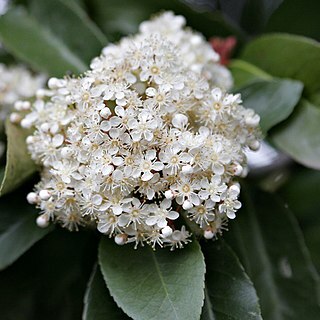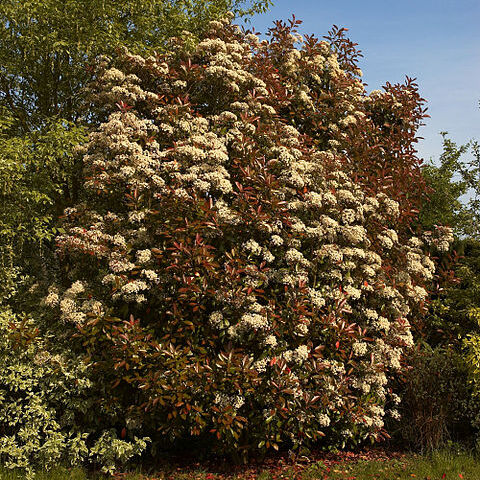Trees or shrubs, deciduous or evergreen. Winter buds small; scales imbricate, few. Leaves alternate, simple, papery or leathery, venation camptodromous, margin serrate, rarely entire, shortly petiolate; stipules present, usually subulate. Inflorescences terminal, umbellate or corymbose, rarely shortly paniculate, many flowered, sometimes flowers 2-or 3-clustered or solitary. Hypanthium cupular or campanulate to cylindric, adnate to ovary or free near apex. Sepals 5, persistent, short. Petals 5, contorted or imbricate in bud, base clawed. Stamens usually ca. 20. Carpels 2–5, rarely 1; ovary semi-inferior, (1 or)2–5-loculed, in fruit free apically or to 1/3 length; styles(1 or)2–5, free or ± connate, short, dilated apically; stigmas truncate; ovules 2 per locule, erect. Fruit a pome, globose, ovoid, or ellipsoid, somewhat fleshy, (1-or)2–5-loculed, free from calyx only near apex or to 1/3 length, with persistent, incurved sepals; carpel crustaceous or membranous, each locule 1-or 2-seeded; seeds erect, testa leathery; cotyledons plano-convex.
Unarmed trees or shrubs, evergreen or deciduous, Malesian species all evergreen. Leaves simple, entire to serrate, the secondary nerves not running to the margin. Stipules free. Inflorescence a terminal, panicle-or corymb-shaped compound raceme. Flowers bisexual, 5-merous. Hypanthium obconoid to campanulate, elongate above the ovary. Sepals persistent. Petals more or less distinctly clawed. Stamens 16-25. Ovary semi-inferior, usually hairy on the exposed, free top, (l-)2-5-celled, styles as many as cells, connate at base or free, ovules 2 per cell. Fruit a pome, covered at apex by the persistent free part of the hypanthium and the sepals, core consisting of the bony endocarp. Seeds 1 or 2 per cell, rather small, testa rather hard, endosperm thin or absent.


